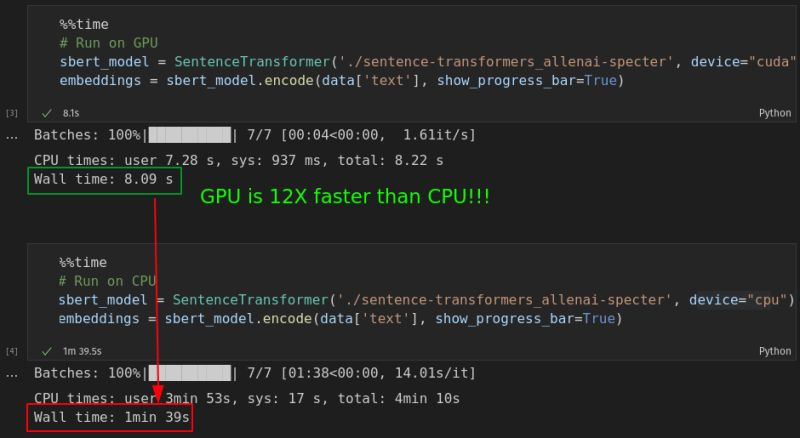Compute
Contents
Compute#
CPU vs GPU#
If you’re new to the world of Data Science, you might’ve heard someone mention using a “GPU.”
What is a GPU? a Graphics Processing Unit is fundamentally just another component that goes into your computer similar to the hard disk or RAM. They’re really good at specific tasks such as gaming and applications which require high graphics power. However, in recent years, GPUs have become much more valuable due to 2 reasons:
Computer scientists discovered that GPUs are perfect for Deep Learning, a class of Machine Learning heavily used in Computer Vision and NLP.
Bitcoin and other Cryptocurrency miners discovered that GPUs allow much faster mining!
Though I would love to have made a million bucks on crypto, I’m but a humble programmer and cannot advise you on crypto mining. I can, however, advise you on running Deep Learning models on a GPU.
Below is a very simple benchmarking running a popular NLP model called Sentence Transformers on a CPU and a GPU. The same code can run 12X faster on a GPU!
But note that not all ML libraries benefit from a GPU. In general, if you’re programming using Tensorflow or Pytorch, there’s a high chance you should see a speedup using GPU. Sorry scikit-learn fans, as far as I know, it doesn’t support GPU (yet!).
If you want to use a GPU with algorithms from sklearn, then check out the fantastic RAPIDS cuML library instead. It has the GPU versions of many popular algorithms that you’d normally use sklearn for!
Finally, what if your computer doesn’t have a GPU? New GPUs have been facing an acute shortage for some time now, and frankly, I’m fed up with all the scalpers selling GPUs at insanely marked-up prices!
Having said that, the best ways to get started with a GPU are entirely free, albeit with some reasonable limitations. Do check them out if you need to use one!

